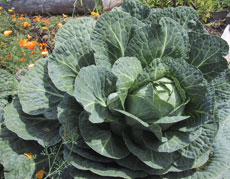Ancient and modern peoples sacredly prepared foods from harvest to table, including fermented foodstuffs such as vegetables, cheese, yogurt, bread, and inebriating meads, wines, and beers. These bubbling creations were often prayed over, celebrated, and infused with Spirit. Techniques of fermentation have been practiced by ancient peoples from all parts of the world, and they ‘insist’ fermentation was “given to human kind through the intercession of sacred beings” and “contain within themselves some of the essence of the sacred source from which they come.”(1)
Fermented food provides the body with probiotics, which are beneficial bacteria that started colonizing our bodies thousands of years ago. They also provide amino acids, vitamins and minerals, boost immunity, and help the body to digest, and absorb essential nutrients. They are detoxifying, and powerfully anticarcinogenic. Fermentation is a sacred process, and we have been fermenting foods for at least 30,000 years, if not much longer. We do not live in a sterile environment, and neither did our most ancient ancestors. Bacteria have been essential to the evolution of mankind, and we have evolved to co-exist in symbiosis with them. It may even be argued that we evolved from them!
Billions of years ago the universe was its own ferment, and from the primordial waters the first bacteria emerged, and eventually became all the life that populates this earth. Fermentation is a way to bring the primordial waters of creation back into our lives, to benefit not just our health, but our spirit as well. Uncertain about our relationship to bacteria? Consider this: using gene analysis, scientists have discovered that the mitochondria and white blood cells in the human body were once free-living bacteria that in ages past developed a symbiotic relationship with us, and even have now become a part of our anatomy.(2)
It is through carrying on the ancient tradition of fermentation, that we are continuing to ally ourselves with the microbial world we have been connected to for as long as life has been present on this planet. Our external environment contains billions of microbes, our internal environment does as well. The making and consumption of fermented foods ensures that we are supplying our bodies with enough of these allies to strengthen and protect our immunity. It is actually a lack of probiotics that leads to dis-ease, as it is the beneficial bacteria that help keep pathogenic bacteria in check when they do find their way into our bodies.
Try this homemade Sauerkraut recipe, it’s simple:
Take one Cabbage, and grate, or chop it up, and put it into a ceramic crock or bowl. Pour some salt into it, I would say 1–4 tablespoons is adequate, depending on the size of the cabbage. Knead the grated and salted cabbage with your hands like bread dough until a good deal of frothy juice or brine is produced. I recommend using your hands to knead the cabbage because it will introduce the lactobacillus strains unique to your own flora. This creates a ferment specially designed for your body’s health and well being. The cabbage should be submerged completely under the brine when held down by a ceramic or glass plate.
During the summer months, the crock can sit in the corner of the kitchen, with cheesecloth covering it. But, when it turns cold I put my sauerkraut into the oven where it can stay warm. I usually bake something, and then after the oven cools off, I place the bowl of cabbage inside. Be careful not to heat your cabbage, however. This will kill the precious bacterial growth! Let the cabbage sit 1–4 weeks before eating, checking on it daily. Enjoy!
1. Stephen Buhner, Paradise Lost: Of Healing, the Sacred, and Beer (1998) An online article found at www.gaianstudies.org.
2. Stephen Buhner, Herbs for Hepatitis C and the Liver (North Adams, MA:Storey Publishing, 2000)
Cabbage image thanks to Alice Deane from her garden on San Juan Island.










Leave a Reply